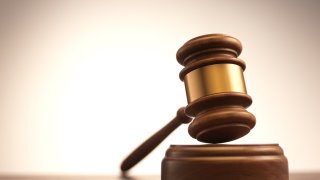
A San Diego man who smuggled potent greenhouse gases from Mexico into the United States and was the first in the nation to be prosecuted under a new law aimed at curbing climate change is now also the first person to be convicted of illegally importing greenhouse gases into the country
Michael Hart, 58, pleaded guilty Tuesday to buying refrigerants in Mexico, then bringing them into the United States by concealing them in his vehicle. Hart then sold the items in online marketplaces, including OfferUp, Facebook Marketplace and other internet sites. He also admitted he conspired to import HCFC 22, which is classified as an "ozone-depleting substance" and has been illegal to import since 2020 except for limited purposes that result in its transformation or destruction.
According to the Department of Justice, the case against Hart was the first prosecution in the United States to include charges related to the American Innovation and Manufacturing Act of 2020, which prohibits the importation of hydrofluorocarbons — or HFCs — without approval by the Environmental Protection Agency.
"HFCs are used in applications such as refrigeration, air-conditioning, building insulation, fire extinguishing systems, and aerosols," according to a news release issued Tuesday by the Department of Justice. "The global warming impact of an HFC can be hundreds to thousands of times greater than carbon dioxide."
Get top local stories in San Diego delivered to you every morning. Sign up for NBC San Diego's News Headlines newsletter.
The EPA says potent greenhouse gases are typically used for refrigeration, air conditioning, building insulation, fire extinguishing systems, and aerosols.
The global warming potential of HFCs are exponentially more potent than carbon dioxide, according to the U.S. Attorney's Office.
“Clean air is not for sale to the highest bidder,” said U.S. Attorney Tara McGrath. “The Department of Justice will use every tool at our disposal to protect air quality and hold criminal polluters accountable.”
Hart pleaded guilty to conspiracy to violate the Clean Air Act regulations and the American Innovation and Manufacturing Act regulations. He is due back in court for sentencing on Dec. 9, when he could be sentenced up to five years in prison and a fine of as much as $250,000.



